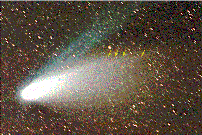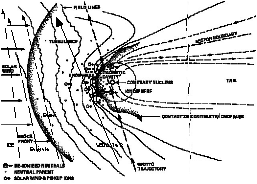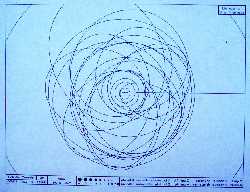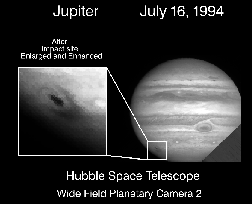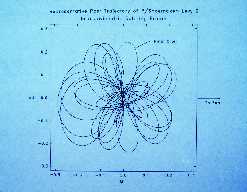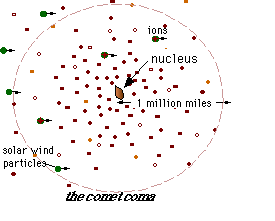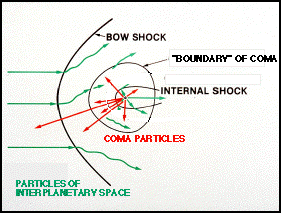Comet Shoemaker-Levy 9 Image List
Impact A
 (84K GIF)
(84K GIF)
This sequence shows the A impact of July 16, 1994. (Courtesy of NASA/NSSDC, Tom Herbst, Max-Planck-Institut fuer Astronomie, Heidelberg, Doug Hamilton, Max-Planck-Institut fuer Kernphysik, Heidelberg, Hermann Boehnhardt, Universitaets-Sternewarte, Muenchen, and Jose Luis Ortiz Moreno, Instituto de Astrofisica de Andalucia, Granada)
 (46K GIF)
(46K GIF)
This is a sequence showing the impact of fragment A on Jupiter. (Courtesy of Tom Herbst, Kurt Birkle, Ulrich Thiele, Max Planck Institut fuer Astronomie (Heidelberg, Germany), Doug Hamilton, Max Planck Institut fuer Kernphysik (Heidelberg, Germany), Hermann Boehnhardt, Alex Fiedler, Karl-Heinz Mantel, Universitaets-Sternwarte Muenchen (Muenchen, Germany), Jose Luis Ortiz, Instituto de Astrofisica de Andalucia (CSIC Granada, Spain), Giovanni Calamai, Andrea Richichi, Astrophysical Institute Arcetri (Florence, Italy), and NASA/NSSDC)
Impact G
 (136K GIF)
(136K GIF)
This is an image after the impact of fragment A by the Hubble Space Telescope on July 16, 1994. (Courtesy of NASA/NSSDC)
 (60K GIF)
(60K GIF)
This is a near-infrared image of the G and D impacts on Jupiter taken from the Apache Point Observatory on July 19, 1994. (Courtesy of Mark Marley and Nancy Chanover, Department of Astronomy, New Mexico State University)
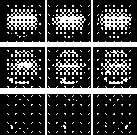 (14K GIF)
(14K GIF)
This is a near-ifrared image showing the sequence of fragment G. (Courtesy of NASA/NSSDC, David Crisp, Vikki Meadows, Stuart Lumsden, Jonathan Pogson, and Steven Lee)
 (108K GIF)
(108K GIF)
This is an infrared color image of the fragment G impact taken on July 18, 1994. (Courtesy of NASA/NSSDC)
 (155K GIF)
(155K GIF)
This is a color image of the fragment G impact site taken by the Hubble Space Telescope. (Courtesy of Hubble Space Telescope Jupiter Imaging Team)
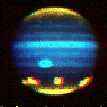 (53K GIF)
(53K GIF)
This is an infrared color composite showing fragments A, E and F, H and G impacts and the Red Spot on Jupiter. This was taken on July 19, 1994. (Courtesy of NASA/NSSDC)






